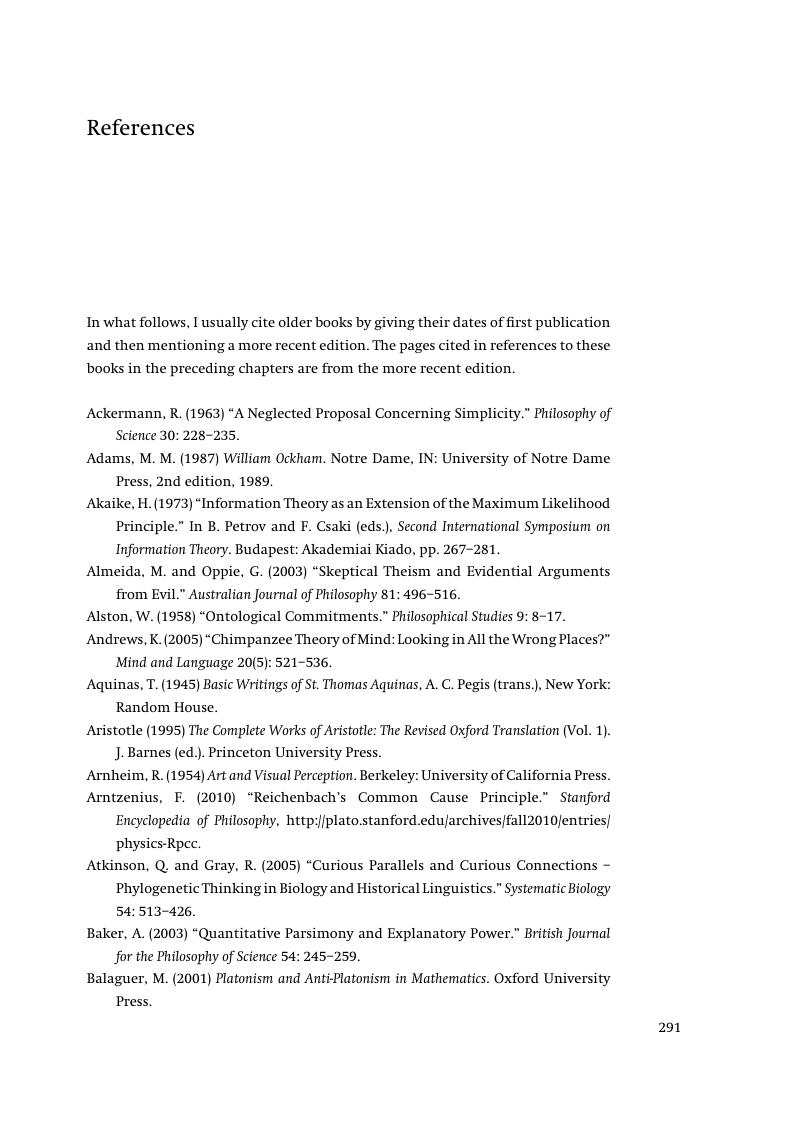Book contents
- Frontmatter
- Dedication
- Contents
- Acknowledgments
- Introduction
- 1 A history of parsimony in thin slices (from Aristotle to Morgan)
- 2 The probabilistic turn
- 3 Parsimony in evolutionary biology – phylogenetic inference
- 4 Parsimony in psychology – chimpanzee mind-reading
- 5 Parsimony in philosophy
- References
- Index
- References
References
Published online by Cambridge University Press: 05 August 2015
- Frontmatter
- Dedication
- Contents
- Acknowledgments
- Introduction
- 1 A history of parsimony in thin slices (from Aristotle to Morgan)
- 2 The probabilistic turn
- 3 Parsimony in evolutionary biology – phylogenetic inference
- 4 Parsimony in psychology – chimpanzee mind-reading
- 5 Parsimony in philosophy
- References
- Index
- References
Summary

- Type
- Chapter
- Information
- Ockham's RazorsA User's Manual, pp. 291 - 308Publisher: Cambridge University PressPrint publication year: 2015



